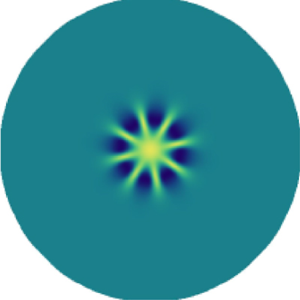Article contents
Pattern formation in photo-controlled bioconvection
Published online by Cambridge University Press: 21 September 2023
Abstract

The model eukaryotic microalgae Chlamydomonas reinhardtii is well known for its ability to generate bioconvection flows that are associated to intricate concentration patterns. Recently, it was demonstrated that the propensity of these algae to move toward a light source – a phenomenon termed phototaxis – can be exploited to locally concentrate micro-organisms and induce (photo)-bioconvection in algal suspensions by inducing a localised excess of density. In the present study we show experimentally that a cell population in a thin liquid layer self-organises in the presence of a heterogeneous light field and displays remarkable symmetry-breaking instabilities that are ruled by both the width of the light beam and the photo-bioconvection Rayleigh number. Beside circular stable states, fingers, dendrites and wave instabilities are reported, quantified and classified in a general phase diagram. Next, we use lubrication theory to develop an asymptotic model for bioconvection in a thin liquid layer, that includes the influences of both gyrotaxis and phototaxis. We obtain a single nonlinear anisotropic diffusion–drift equation describing the spatiotemporal evolution of the depth-averaged algal population. Analytical and numerical solutions are presented and show a very good agreement with the experimental results. In particular, we show that the dendrite instability arises as a result of a subtle coupling between the nonlinearity of the phototactic response, the gyrotactic effect and the self-induced bioconvective flows. Such complex flow fields might find applications in photo-bioreactors, through the efficient stirring of the harvested biomass.
- Type
- JFM Papers
- Information
- Copyright
- © The Author(s), 2023. Published by Cambridge University Press
References
- 4
- Cited by



